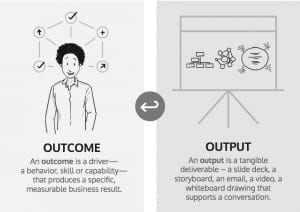3 Most Common Leadership Mistakes and How to Avoid Them in 2019

In both cases, the expectations are high and the stress is unavoidable. Not only should a leader outperform themselves and make sure all the objectives are met but they should also ensure their entire team feels happy and satisfied with work. Not an easy task to do!
Regardless of how many years of professional experience and personal training leaders possess, all of them tend to commit certain mistakes because they are all human beings. But what distinguishes a good leader from the rest is their ability to be able to recognize their mistakes and find solutions to avoid them when they get a second bite at the cherry.
For those leaders looking to improve their leadership qualities, we have compiled a list of 3 most common leadership mistakes and ways to avoid them in 2019.
Let’s take a closer look at each mistake.
#1. Not communicating the vision and the goals
Having a vision and setting clear goals is one thing, being able to communicate those to your employees is a completely different thing. Many leaders think that if they have a clear vision, that is more than enough for employees to succeed. While there is some truth to that, constantly communicating the vision and the goals is more than essential to guarantee a successful team work.
Leaders should remember that their employees have different personality types and they do not necessarily function in the same way. In order to ensure that the whole team is on the same page, leaders should remind them about the significance of the vision and how it translates into everyday tasks for each employee.
Sharing the vision, sticking to it and showing how every employee can contribute to that vision every day is key to creating a successful working environment based on common goals.
Top Tip: constant communication of the vision can be executed through monthly email reminders, oral reminders during meetings or via audiovisual support materials like TV screens around the office. Make sure every employee knows the vision and knows how to contribute to it.
#2. Poor delegating of tasks
Poor delegating of tasks is equally harmful as not delegating at all. Recent research has shown that leaders who skillfully delegate tasks achieve three-year growth rates that are 112% higher than those who don’t delegate at all or who do so poorly.
Delegating tasks will not only let a leader concentrate on more important tasks of strategic value to the company but will also empower employees because by doing even the smallest task employees feel like a valued member of a team, especially when those tasks correspond to their strengths.
Here is how to delegate tasks successfully:
- Identify the tasks to delegate
- Choose who to delegate the tasks to, based on their strengths
- Be clear about the tasks to implement
- Monitor progress and give continuous feedback for improvement
- Be able to redelegate when something goes wrong
- Show constant appreciation
It has been proven that employees who have a chance to use their strengths and character traits are on average 74% more engaged at work. Moreover, the mere fact of knowing each other’s strengths makes the team 12% more effective.
Top Tip: delegating tasks based on strength finder results will help leaders achieve maximum efficiency. Sharing each other’s strengths can be of huge help to team members who work together as well as for leaders who manage those teams.
#3. Failing to adjust to changes
In today’s ever-changing world the ability to adjust to changes is crucial to successful leadership: continuous tech developments, new customer relationship management practices, employee motivation roller-coasters, and much more.
One of the main differences between a leader and a manager is the aptitude to embrace change. Real leaders know that change leads to new ways of growth and accomplishment. While there is no perfect formula for managing change, the secret of succeeding is realizing that change is inevitable and that growth happens when things change.
Top Tip: learn to be flexible as a leader: listen to your employees, constantly follow the trends and keep an open eye on market developments. Remember to surround yourself with people who can complement you in areas where your strengths are not enough to help you with your weaknesses.
There is no special school for leadership that teaches how to be a true leader. It takes a lot of everyday practice and a great deal of flexibility to be able to adjust to people, places and different developments.
“The pessimist complains about the wind. The optimist expects it to change. The leader adjusts the sails.”
John Maxwell
About the Author






